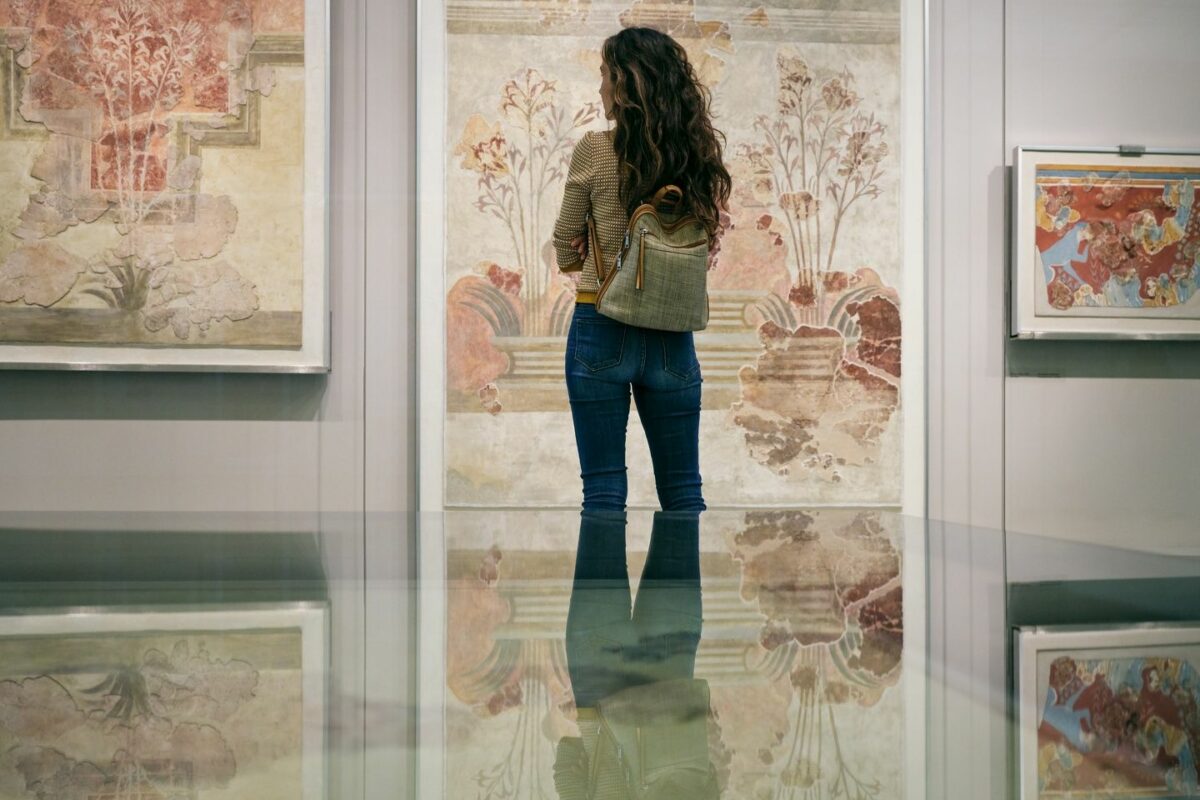
Crete’s Minoan wall paintings stand out as some of the most vivid and captivating artifacts of the ancient world. These masterpieces, housed in the Archaeological Museum of Heraklion, offer a fascinating glimpse into the lives, beliefs, and artistry of the Minoan civilization. Here’s why these extraordinary wall paintings are a must-see for anyone visiting Crete.
A Window into the Minoan World
The Minoan civilization, which flourished on Crete from approximately 3000 to 1450 BCE, is renowned for its advanced society and artistic achievements. The wall paintings, or frescoes, are among the most significant remnants of this ancient culture, providing invaluable insights into Minoan life and aesthetics.
The Discovery and Preservation
The most famous Minoan frescoes were discovered at the Palace of Knossos, one of the largest and most significant Minoan archaeological sites. British archaeologist Sir Arthur Evans, who excavated Knossos in the early 20th century, unearthed these vibrant artworks that had been buried for centuries. Thanks to meticulous preservation efforts, many of these frescoes have been restored and are now displayed in the Archaeological Museum of Heraklion.
The Frescoes: Themes and Symbolism
Minoan frescoes are celebrated for their dynamic compositions, vivid colors, and intricate details. They often depict scenes of nature, religious rituals, and everyday life, reflecting the Minoans’ deep connection to their environment and spiritual beliefs.
Key Frescoes:
- The Prince of the Lilies: This iconic fresco portrays a young man adorned with a crown of lilies, symbolizing youth, beauty, and the renewal of life. The graceful figure and vibrant colors exemplify the Minoans’ artistic prowess and reverence for nature.
- The Bull-Leaping Fresco: One of the most famous Minoan artworks, this fresco depicts a ceremonial bull-leaping event, where athletes perform acrobatic feats over a bull. It highlights the importance of bulls in Minoan culture and religion, symbolizing strength and fertility.
- The Blue Ladies: This fresco features elegantly dressed women, showcasing the sophistication of Minoan fashion and society. The intricate details of their garments and jewelry reflect the high status and cultural refinement of Minoan women.
The Artistic Techniques
Minoan artists used a technique known as buon fresco, where pigments were applied onto wet plaster, allowing the colors to bond with the wall surface as it dried. This method resulted in vibrant and durable artworks that have stood the test of time. The use of natural pigments, such as red ochre, yellow ochre, and malachite, created a rich palette that still captivates viewers today.
Visiting the Archaeological Museum of Heraklion
The Archaeological Museum of Heraklion is a treasure trove of Minoan artifacts, with the wall paintings being among its most prized exhibits. Visiting the museum provides an immersive experience, allowing you to explore the artistic and cultural achievements of the Minoans up close.





